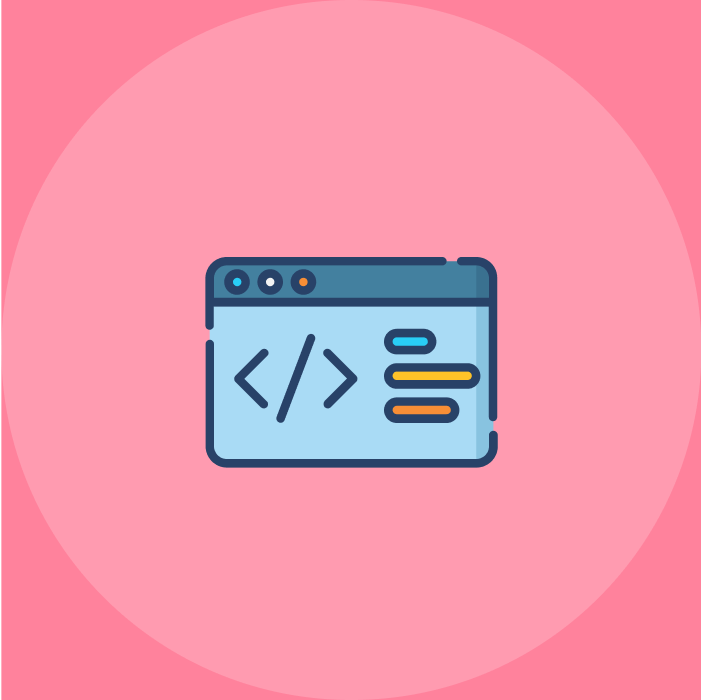Web development comes with a huge ruleset and techniques every website developer should know. To have a website to look and function as you wish them to, you need to get familiar with web technologies that can make you achieve your goal.
With the rising standard of web applications and the increase in complexity of technology, frameworks have become an essential part of the web development world. Endorsing frameworks is a sensible approach instead of reinventing the techniques. Frameworks help developers in building rich and interactive applications.
Frameworks are for both backend and frontend development. These frameworks basically support web apps, websites, and API development. You can think of them as libraries that help in building web apps efficiently and effortlessly.
Developers are always in search of service providers that are well-versed with the latest web development technologies. If you are in search of a framework that can help your company, then we’ll help you shortlist the best ones in the market. We have compiled the list of best frontend and backend web development frameworks in 2024:
The most robust backend frameworks in 2024 that you might be interested in learning.
1. Express
Due to the increase in Node.js popularity, Express is the most trending backend framework these days. Big shot players like Uber, IBM and Accenture use it as it is compatible with other frameworks like Kraken, loopback and Sails. It is minimal, fast and is not an opinionated framework.
The core functionalities it provides leverage Node.js performance without obscuring the features of the node. Due to its flexibility, it supports full and REST API applications. It just has one drawback, there’s no definite way of doing things, so beginners might feel a bit lost.
2. Django
A model-view-template framework, Django uses Python for web development. Website development companies and big companies like Google, YouTube, and Instagram use it. Some batteries-included features like authentication and messaging are its most noteworthy features. The patterns it follows are convention over configuration and DRY.
Security is quite essential in Django and it provides techniques and tools for developers that help in building a secure website and implementation of security features in the framework. One example is preventing code execution in the template layer.
3. Rails
A model-view-controller framework that uses Ruby, Rails is a popular framework loved by many developers. Primary users of Rails are Airbnb, GitHub, Hulu, and Shopify. Also considered as a beginner-friendly framework, there are many useful gems for rails.
Developers can work faster and more efficiently with its library-like dependencies that extend the functionalities of applications. If this tool interests you and you want to learn it, there are many tutorials, screencasts, and resources available online.
The Rails community is quite reliable and friendly. The only disadvantage of Rails is the time taken to deploy and run in production. And once you dive deep, the learning curve is quite steep.
This framework is quite proficient, object-oriented open-source framework that is all for building lightweight apps and boosting flexibility. Flawless interaction with third-party apps, detailed error logs, development of SEO-friendly URLs are some of its best features that make it irresistible.
4. Laravel
Another model-view-controller framework, Laravel uses PHP. PHP is the most popular web language. This framework is relatively new and comes with API support out of the box.
Its reach can be extended because of the decent amount of packages it possesses. Beginners can learn a lot from its screencast tutorials website and over a thousand videos on PHP, Laravel, and front-end technologies.
Laravel’s exquisite and expressive structure allows web developers to build customized infrastructure and back out ordinary errands like authentication, sessions, storing, and steering.
Due to its scalability, performance and features, Laravel emerges as the top choice of many developers and website development companies.
5. Spring
This is another Model-View-Controller framework that uses Java. Spring is used by websites like Wix, TicketMaster, and BillGuard. It’s popular amongst developers because Java is a strongly typed language.
It provides enterprise-grade app development with the primary intent to ease the process of making J2EE apps. Developers can create simple, fast and flexible apps with its rigid architecture frame.
Frontend Javascript Frameworks
6. Angular
If you are looking to build rich single-page applications, then Angular is a front-end framework that will be best. Earlier, it used javascript, but now it has switched to typescript. AngularJS is a multifaceted open-source front-end framework. You can build a complete client-side application with the help of this vibrant framework.
Big sharks like Google, Microsoft, and PayPal use it. It is developed and maintained by Google. Developers can create dynamic web pages. Declarative Paradigm patterns in AngularJS make the core light and easy to read. The fact that it’s not SEO friendly is the main con apart from its size compared to other frameworks.
7. React
React is more like a front-end library than a framework for some developers; however, many developers consider it a framework. React advanced concepts are evident in its pioneering use of component-based architecture.. It has a virtual dom that is quite easy to pick up and makes the dom manipulation much fasterDeveloped by Facebook; React could be used on both server-side and client-side.
8. Vue
A new rising star, Vue.js is a progressive framework that started as an individual project. Created by Evan You, it focuses on component composition and declarative providing.
Right now, it is one of the most trending JS frameworks out there. You can build complete frontend applications with its component architecture. It is one of the most adaptive frameworks.
It allows you to work on existing projects by adopting a portion of it and seamlessly moving forward. It has a central library that emphasizes the view layer. All this makes integration with other libraries and existing projects easy.
9. Ember
With its two-way data binding components and other out-of-the-box features, Ember was named the best Javascript framework in 2015. The ever-expanding Ember community is enormous. New features and releases are added regularly.
Google, Microsoft, Heroku, and Netflix are known to use this framework quite often. To maximize the developer’s productivity, it eliminates the need for redundant and monotonous activities or adopting some JS best practices in its core design. Ember is mainly focused on how to make lives easier for developers.
10. Backbone
This extremely light front-end framework, Backbone is used to build rich Single-Page applications. Following the MV* pattern, it partly implements the MVC design. It has a vibrant ecosystem and underscores the library, which is its only core dependency. Backbone allows you to build complete client-side applications when added to Mustache and Marionette
Final Word
Has the above-mentioned list of the Top Web Development Technologies And Frameworks of 2020 has helped you to shortlist and pick a framework for you to work on? With the exponential amplification of web development tools and frameworks, the competition in the market is fierce.
We hope this article gives you an insight into how to do things. You’ll find a lot of similarities between frameworks across different languages. We hope you choose the best web development framework that fits your requirements. Remember, there is no such thing as a dead end. You should migrate and try new things if one doesn’t work out.
Subscribe to weekly updates
You’ll also receive some of our best posts today






